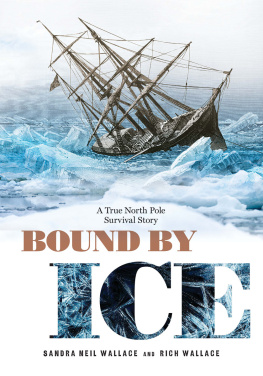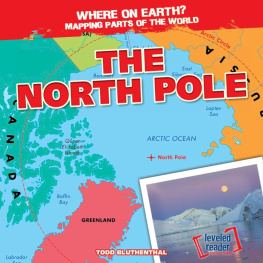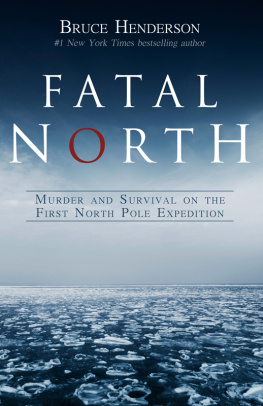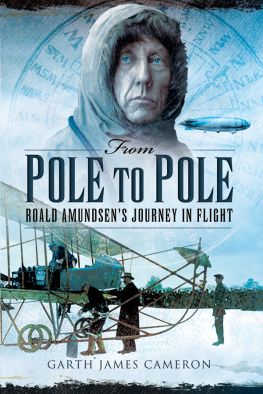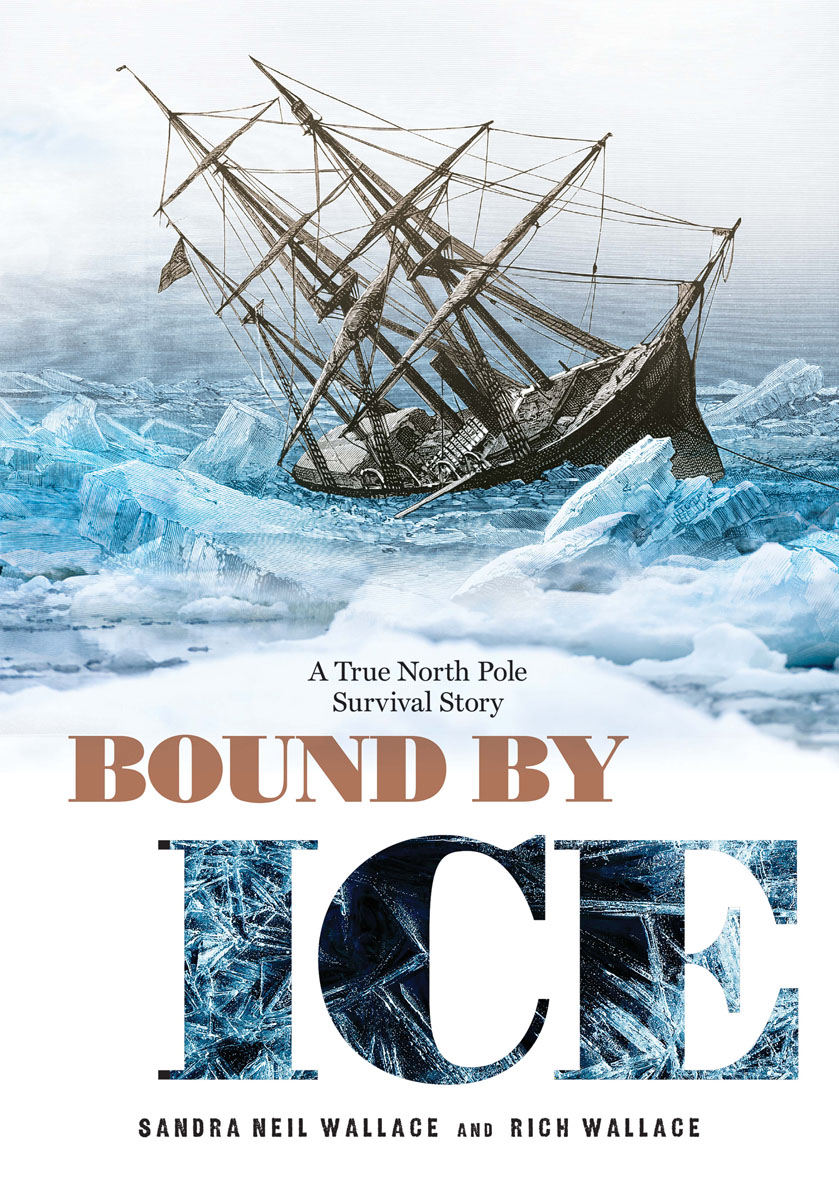Text copyright 2017 by Sandra Neil Wallace and Rich Wallace All rights reserved.
For information about permission to reproduce selections from this book, please contact .
THE OFFICERS AND CREW
OF THE JEANNETTE
OFFICERS
Lieutenant Commander George Washington De Long Lieutenant Charles W. Chipp, executive officer
Chief Engineer George W. Melville Lieutenant John W. Danenhower, navigator
Dr. James M. Ambler, surgeon
James H. Bartlett, first-class fireman
George W. Boyd, second-class fireman
SEAMEN
John Jack Cole, boatswain
Jerome James Collins, meteorologist
Adolph Dressler
William Dunbar, ice pilot
Hans Halmoi Ericksen
Carl August Grtz
Nelse Iversen, coal heaver
Peter Edward Johnson
Heinrich Hansen Kaack
Albert George Kuehne
John Lauterbach, coal heaver
Herbert W. Leach
Walter Lee, machinist
Frank Edward Mansen
Raymond Lee Newcomb, naturalist and taxidermist
William F.C. Nindemann, carpenter
Louis Philip Noros
Walter Sharvell, coal heaver
Edward Starr
Alfred Sweetman, carpenter
Henry Diamond Warren
Henry Wilson
Ah Sam, cook
Charles Tong Sing, steward (cooks assistant)
*Alexey, dog driver, hunter, and trapper
*Aneguin, dog driver, hunter, and trapper
*Joined the ship at St. Michael, Alaska
CONTENTS

INDEX

The Jeannette is pounded by Arctic ice.

JUNE 11, 1881

North of the Arctic Circle
W ith a sharp crack and a fierce shaking of the ship, Lieutenant Commander George W. De Longs worst fear came true. De Long raced up to the Jeannettes deck, gripping the ladder with both hands as it creaked and swayed.
The ship filled with water and listed to one side. Her masts and smokestacks caved in.
The Jeannette was going under. There was no way to save her now. If the crew hurried, they could salvage enough food and equipment to sustain them for the nearly impossible journey aheadfive hundred miles across a violently shifting ice pack toward a frozen, inhospitable land.
The thirty-three men were already in poor condition. The Jeannette had been frozen fast in the ice of the Arctic Ocean for more than twenty months, and several men were sick or injured. Fresh drinking water was scarce. The men were bitterly cold, always damp, and exhausted.
De Long ordered everyone off the Jeannette and waved farewell to it with his cap. The men rested on the icesurrounded by dogs, provisions, and equipmentand waited for the ship to sink.
It wasnt a lack of preparation or courage that had put them in this predicament. Like other explorers before them, these men had a never-turn-back attitude. They were seeking the North Polea goal that many had tried to reach, but none had ever attained.
De Long knew that his dangerous quest could cost him his life, but he wasnt thinking only of himself. He intended to push human knowledge and achievement to its limits. Maybe there were new islands to be discovered, or unknown species of birds and animals. Hed expected to ride a warm ocean current to the pole. Rumors of a rich, tropical polar sea energized his every thought as he planned the expedition.
But all hed found was ice.
Should success crown the efforts of the gallant commander, it will be one of the most brilliant geographical adventures ever won by man. The solution of the Northern mystery would be the event of the nineteenth century.
The New York Commercial Advertiser, July 9, 1879
CHAPTER 1

The Great Unknown
N o one had ever seen the North Pole, but the lure of a warm, calm sea at the top of the world had tempted explorers for centuries. Ringed with ice, the sea was said to teem with fish and other sea life, and it might even hold a fertile continent with a lost race of humans or prehistoric animals. Timber, minerals, and other valuable resources waited to be exploited. Any adventurer who could struggle his way to that paradise would soon be famous and rich.
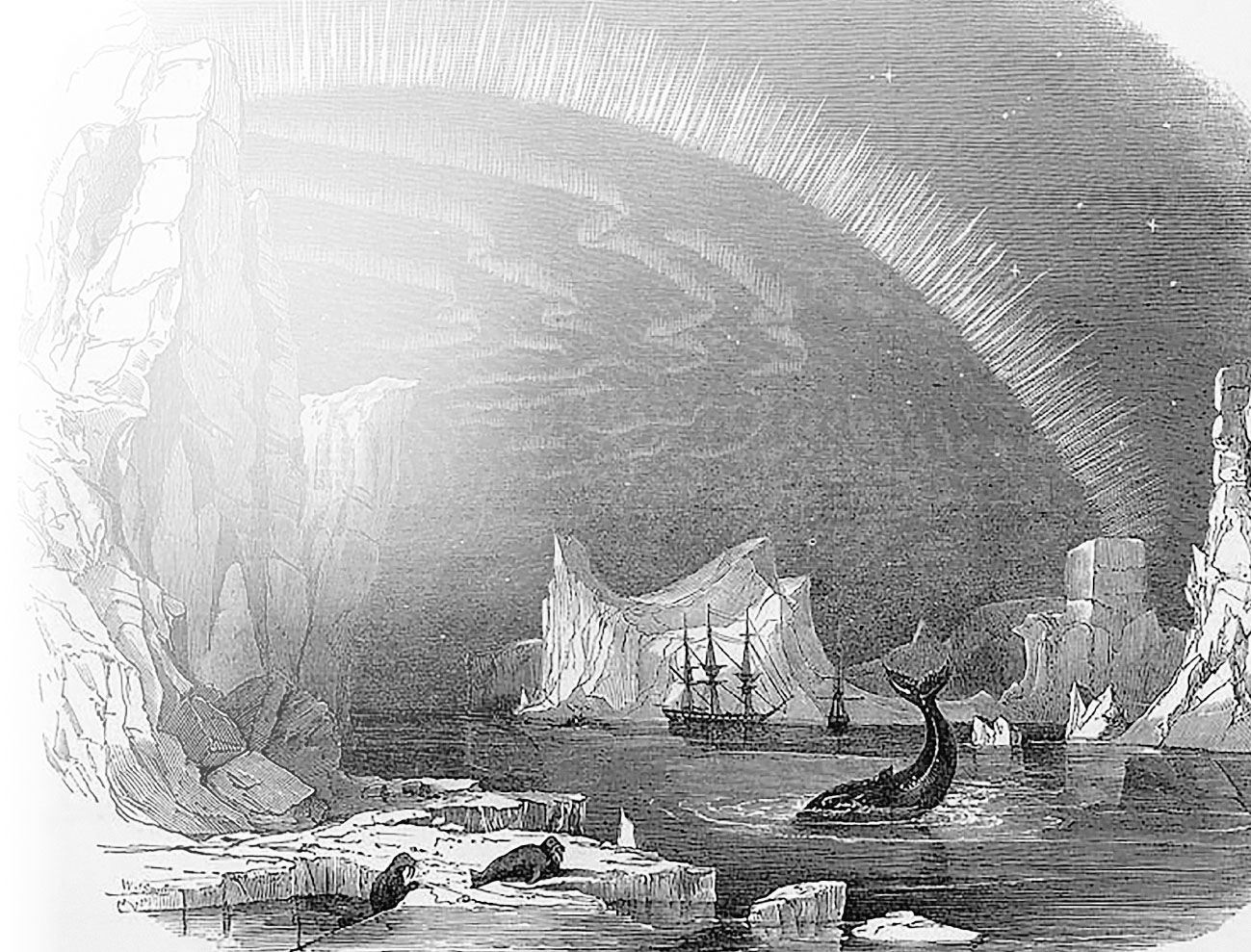
Adventurers imagined a warm, tropical sea at the top of the world.
Many expeditions had tried to conquer the North, usually traveling into the Northwest Passage along the coast of Canada. All were turned back by thick, turbulent ice or sank in the fierce storms of the Arctic. Sailors drowned, starved, or succumbed to diseases like scurvy, pneumonia, and lead poisoning. The best-known and most gruesome of the failed expeditionsled by Sir John Franklin in 1845ended with the deaths of all 129 men. Some of the crew had resorted to cannibalism, but none survived.
The 1879 voyage of the U.S.S. Jeannette was supposed to be different. Better equipped than any previous expedition and with the backing of the U.S. Navy and one of the countrys richest businessmen, the launch caused a sensation. James Gordon Bennett Jr.owner of the New York Herald newspaperfunded the voyage and picked George Washington De Long as its captain. News coverage of the preparations and the departure created great excitement and anticipation.
Bennett had a passion for fast boats and racehorses. Tall and lanky, hed inherited the Herald from his father, and his tactics of sensationalizing the news quickly doubled the papers circulation. Hed publish nearly anything if it would generate a buzz, and he didnt hesitate to cause newsworthy events, or even to make them up. In November 1874, hed published a story about lions, tigers, and other animals that were killing people in New York City after escaping from the Central Park Zoo. A rhinoceros had gored its keeper to death. People walking in the streets were attacked and mauled.

